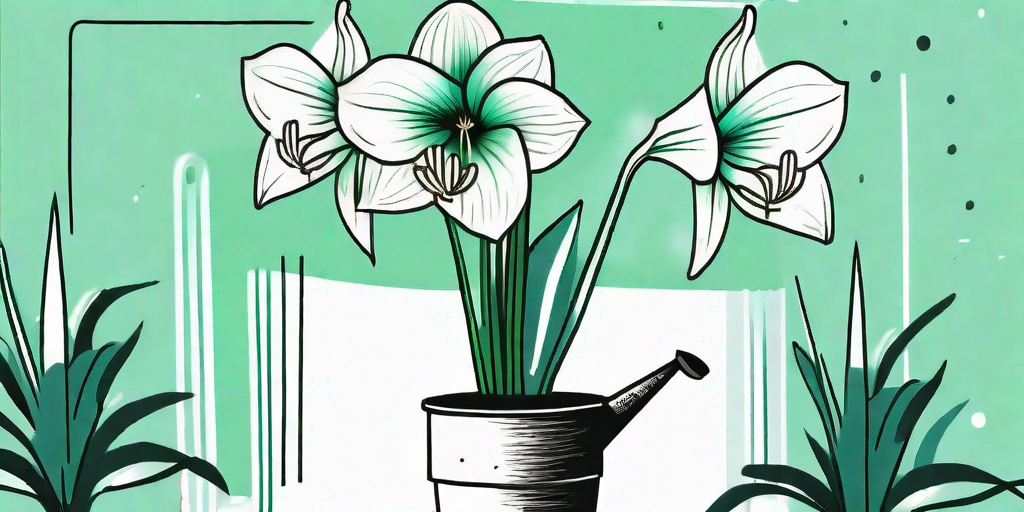
Ah, the Amaryllis! A flower that's as fun to say as it is to grow. With its vibrant colors and lush blooms, it's no wonder that this bulbous beauty has gardeners around the world swooning. But, like any diva, the Amaryllis requires a little extra TLC to keep it looking its best. And by TLC, we mean fertilizer. Yes, that's right, the secret to those lush blooms is all in the feed. So, let's get down to the nitty-gritty (quite literally) and delve into the world of Amaryllis fertilization.
The Basics of Amaryllis Fertilization
Before we start throwing around words like 'nitrogen' and 'phosphorus', let's take a moment to understand why fertilization is so important. You see, while Amaryllis bulbs come pre-loaded with all the nutrients they need for their first bloom, subsequent blooms require a little help from us. Think of fertilizer as a top-up for your Amaryllis' nutrient bank account.
Now, when it comes to choosing a fertilizer, not all are created equal. Amaryllis prefer a balanced fertilizer, which means it has equal amounts of nitrogen (N), phosphorus (P), and potassium (K). These are the three primary nutrients that plants need to grow and bloom. So, when shopping for fertilizer, look for one with a ratio like 10-10-10 or 20-20-20.
When to Fertilize
Timing is everything, especially when it comes to fertilizing your Amaryllis. The best time to start is after the bulb has finished blooming and the flower stalk has begun to die back. This is when the bulb begins to store energy for the next bloom cycle.
From this point, you should fertilize your Amaryllis every 2-3 weeks until the leaves begin to yellow in the fall. Then, it's time to stop fertilizing and let the bulb rest for a few months before the next bloom cycle begins.
How to Fertilize
Now that you know when to fertilize, let's talk about how. Start by mixing the fertilizer with water according to the package instructions. Then, simply pour the solution into the pot, making sure to wet the entire surface of the soil.
But be careful not to overdo it. Too much fertilizer can actually harm your Amaryllis by causing salt build-up in the soil. So remember, when it comes to fertilizing, less is often more.
Advanced Amaryllis Fertilization Tips
Feeling confident in your fertilization skills? Ready to take your Amaryllis game to the next level? Well, buckle up, because we're about to dive into some advanced fertilization tips.
Firstly, while a balanced fertilizer is a great start, Amaryllis can also benefit from some additional micronutrients like magnesium and calcium. These can often be found in specialty bulb fertilizers or can be added separately.
Understanding Soil pH
Did you know that the pH level of your soil can affect how well your Amaryllis can access the nutrients in the fertilizer? It's true! Amaryllis prefer slightly acidic soil with a pH between 6.0 and 6.5. If your soil is too alkaline, certain nutrients can become locked up in the soil, making them unavailable to your plant.
So, how do you know if your soil pH is in the right range? Well, you could send a soil sample to a lab for testing, or you could use a simple home test kit. If your soil is too alkaline, you can lower the pH by adding sulfur or peat moss. If it's too acidic, you can raise the pH by adding lime.
Using Organic Fertilizers
If you're a fan of the organic gardening movement, you'll be pleased to know that there are plenty of organic fertilizers that can be used with Amaryllis. These include compost, worm castings, and bone meal. Just remember to check the N-P-K ratio and adjust your application rate accordingly.
One of the benefits of using organic fertilizers is that they tend to improve the overall health of the soil, which can lead to healthier, more vibrant plants. Plus, they're a great way to reduce your environmental impact.
FAQs
Can I use a slow-release fertilizer with my Amaryllis?
Absolutely! Slow-release fertilizers are a great way to provide a steady supply of nutrients to your Amaryllis. Just be sure to adjust your application rate to avoid over-fertilizing.
Can I use a liquid fertilizer with my Amaryllis?
Yes, liquid fertilizers can be used with Amaryllis. They are often easier to apply than granular fertilizers and can be absorbed by the plant more quickly. However, they also tend to be more expensive and require more frequent applications.
What should I do if my Amaryllis isn't blooming?
If your Amaryllis isn't blooming, it could be due to a number of factors. It could be that the bulb is not getting enough light, the temperature is not right, or the bulb is not getting enough nutrients. If you suspect the latter, try adjusting your fertilization routine.
Conclusion
Well, there you have it, folks! The secret to lush Amaryllis blooms is all in the feed. With the right fertilizer and a little bit of know-how, you can keep your Amaryllis looking fabulous all year round. So go forth and fertilize, my green-thumbed friends! Your Amaryllis will thank you.
And remember, gardening is a journey, not a destination. So don't be afraid to experiment and learn as you go. After all, the best fertilizer is the gardener's shadow.















